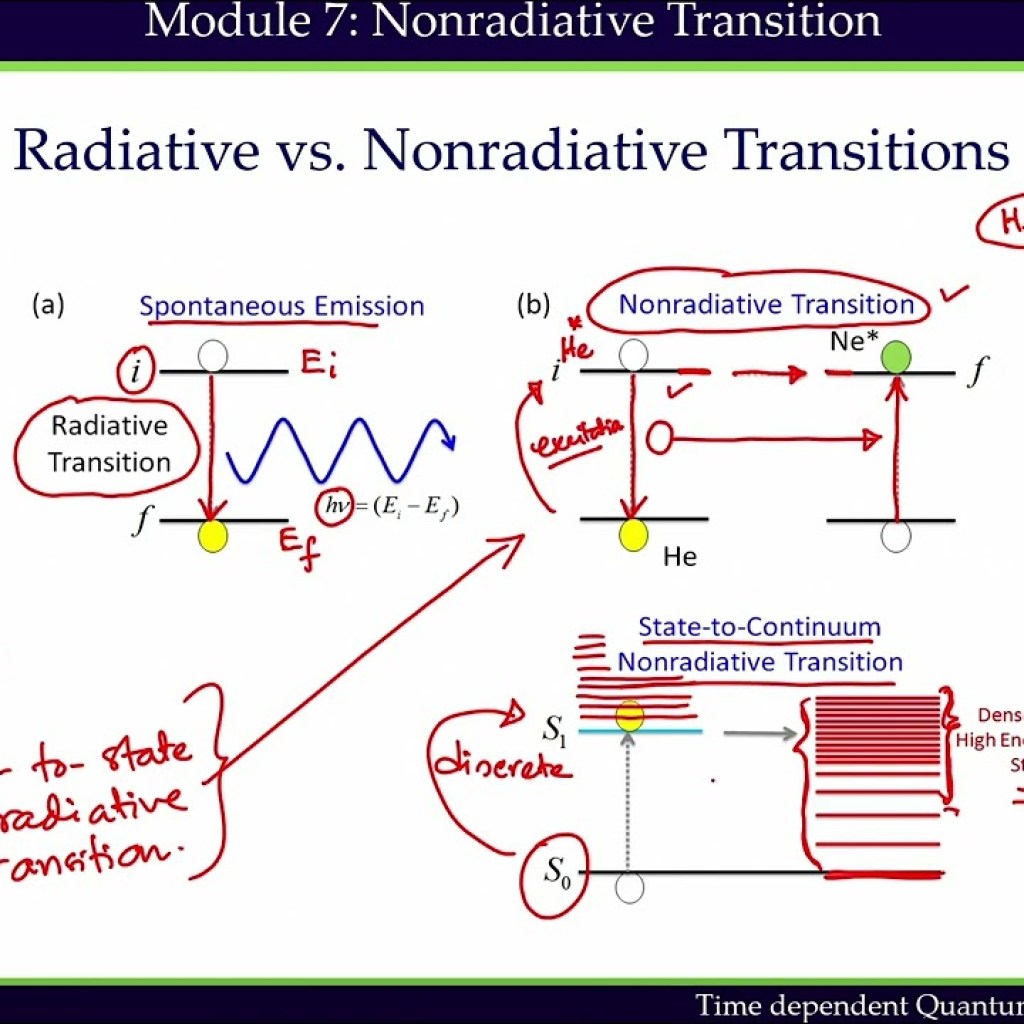Contents

Source: YouTube
Understanding Non-Radiative Transitions in Laser Gain Media
In the realm of photonics, non-radiative transitions play a crucial role, particularly in the context of laser gain media. These transitions involve the movement of atoms and ions between energy levels without the emission of light, which distinguishes them from radiative transitions.
The Basics of Non-Radiative Transitions
Atoms and ions within laser gain media possess multiple excited energy levels. When these particles transition to lower energy levels, they typically emit photons, carrying the energy difference between the involved levels. However, in non-radiative transitions, this energy is not released as light. Instead, it is dissipated through other mechanisms, most commonly as phonons, which are associated with the lattice vibrations of a solid.
Mechanisms of Energy Dissipation
In solid materials, phonon emission is a rapid process, especially when the transition energy is smaller than the energy of some lattice phonons. This allows the radiative transition to be bypassed. For transitions involving larger energies, multiple phonons might be emitted, but the probability of such transitions decreases significantly when more than three phonons are involved.
In addition to phonon emission, impurities or lattice defects can also facilitate non-radiative transitions. These defects possess additional electronic levels that can accept excitation energy from nearby ions, impacting the efficiency of the laser gain medium.
Impact on Laser Gain Media
Non-radiative transitions can significantly affect the performance of laser gain media. By reducing the upper-state lifetime of the medium, they decrease the population of the upper energy levels. This reduction can lead to lower gain efficiency during continuous pumping and may limit the maximum achievable laser gain.
However, non-radiative transitions are not entirely detrimental. They are crucial for the operation of many solid-state laser gain media. These transitions can help populate the upper laser level when pumping occurs to a higher-lying level, and they assist in depopulating the lower laser level, thus minimizing reabsorption losses.
Conclusion
Non-radiative transitions, though often overlooked, are fundamental to the functionality and efficiency of laser gain media. Understanding these processes allows for better design and optimization of laser systems, ensuring that they operate at peak efficiency. As research in photonics advances, the role of non-radiative transitions will continue to be a subject of interest, offering insights into the intricate workings of laser technologies.


Source: Physics Stack Exchange
Feel free to comment your thoughts.



